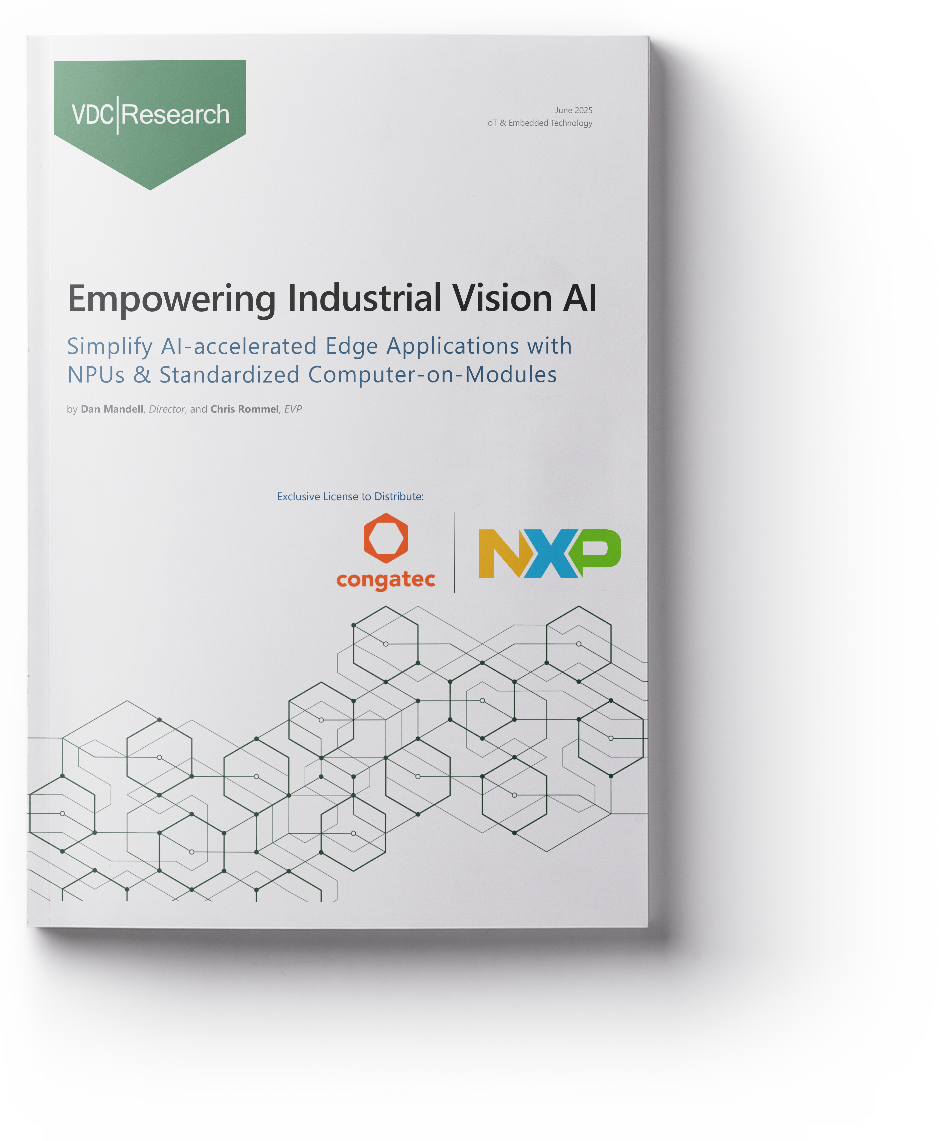Industrial vision AI: Are you prepared for it?
In the rapidly evolving landscape of industrial applications, Artificial Intelligence (AI) is emerging as a game-changer. From manufacturing environments and healthcare facilities to advanced robotics, AI is transforming how industries operate—driving efficiency and fostering innovation.
And although we have some ideas where it will lead us, I am sure most of the paths lie unexplored ahead of us. To explore these transformative paths in greater depth, we partnered with leading market experts from VDC Research and NXP to research where Industrial AI might go. Follow me on this journey to the report’s key insights. You’ll find a link to download the full report at the end of this post.
The Rise of Industrial AI
Industrial AI is no longer just a buzzword – it’s a reality reshaping almost all applications across a wide range of industries, and its adoption is accelerating. In fact, the use of AI and machine learning technologies is projected to grow from 15.7% of current projects to 51.2% within just three years. So you better fasten your seatbelts. And it is not coming from some scientific square heads; it is based on real-life insights from engineers directly involved in industrial AI initiatives covering topics including.
- How AI is being integrated into industrial applications
- The challenges engineers face in implementation
- The most rapidly growing types of AI workloads in industrial projects
- The ideal AI engines and accelerators to simplify design-in.
What you can expect to find in the report
-
Market Growth and Trends
AI-accelerated vision solutions are in fact the key driver to use AI in industrial applications. This has led to rapid growth in the market for embedded AI boards, modules, and systems, with the compound annual growth rate (CAGR) projected to be 27.2% from 2024 to 2027. -
Meet challenges with best practices
To exploit the full potential of industrial AI, several challenges must be addressed. Learn how to best leverage the AI hardware and software ecosystem to simplify implementation and overcome the key barriers. -
Understand industrial edge AI use case requirements
Integrating AI significantly enhances the capabilities of computer vision systems. However, as generative AI and large vision language models expand rapidly in both size and scope, new edge AI workloads require more and more performance. The report details the technical requirements for various AI workloads, providing you with a valuable reference for best preparing your next industrial AI projects.
Why you should read the full report!
The insights shared in my blog post are just a snapshot of what the full report has to offer. Download the full market report we have developed in collaboration with VDC Research and NXP to get a deep analysis of the current state and future direction of industrial AI.
By downloading the report, you’ll gain access to:
- Forecasts and trends in the industrial edge AI market
- Insights into how AI workloads are implemented in real-world projects
- Use cases that illustrate AI workloads for different TOPS (tera operations per second) requirements
- Best practices for hardware and software ecosystems to implement edge AI vision
Download the full VDC Industrial AI Market Report and unlock the future of your industrial applications:




